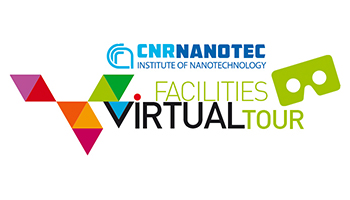Facilities & Labs
The SliM Lab focuses on (a) the experimental and theoretical study of soft matter, (b) structuring surfaces for environmental applications, (c) functional organic devices, (d) aging dynamics in complex fluids, (e) statistical mechanics of disordered and glassy systems, (f) photonics in random media, (g) bone tissue and cell engineering, (h) bio-fluids, (i) active matter, (j) quantitative biology, (k) cellular metabolism, (l) neurodegerative diseases, (m) biomarkers for early detection of pathologies, and (n) cultural heritage. Among the techniques that are developed and employed in our labs at Rome/Sapienza and at ESRF/Grenoble are: at the experimental level, X-ray tomography and diffraction, atomic force microscopy, confocal and holographic 3D microscopy on the imaging field, as well as soft lithography, two photon lithography, holographic optical trapping and microfluidics in the fabrication and manipulation framework from the nano- to the meso-scale, and optical trapping; and, at the theoretical level, bio-network algorithms, Monte Carlo, multi scale and optics numerical simulations.
Our research it is mainly focused on the progress and translation of modern x-ray physics concepts to biomedical sciences and, recently, to cultural heritage, exploiting the long-standing experience in X-ray optics and X-ray imaging. Our Labis a computer lab.anditincludes server and medical monitors for X-ray phase contrast tomographic reconstruction with friendly software for non expert users, and dedicated software for the different applications. 3D rendering software is available and post-processing software for quantitative analysis has been developed.
Responsible:
Soft lithography, cell engineering, microfluidics & lab-on-chip, supramolecular organisation, high resolution structural and optical characterization.
Our soft lithography laboratory provides material fabrication and characterization for bio engineering, small cheap microfluidic devices, functional medical diagnostic and treatment and environmental applications. Our laboratory covers both development of structures (soft-lithography based setup through casting of elastomeric materials such as polydimethylsiloxane (PDMS) on a master) materials characterizations (Atomic Force Microscope (AFM), contact angle analyzer) and modification of the wetting properties and cleaning of substrates (Benchtop plasma cleaner, Contact printer).
La facility Devices è ubicata al piano terra della palazzina A del CNR NANOTEC, c/o la sede di Lecce, ed è costituita da n. 03 laboratori:
Responsible:
Micron sized beads can be trapped in regions of high light intensity. A laser beam wavefront can be sculpted by a computer generated hologram and focused on an almost arbitrary intensity distribution. We’re working on applications of holographic optical micromanipulation to microfluidics, statistical mechanics, colloidal science.Life at the mesoscopic scale can be much different than our macroscopic world. Fluids flow without inertia, liquid interfaces can be as hard as walls, thermal agitation of the environment kicks so strongly that objects wander around restlessly. We’re interested in colloidal interactions, complex rheology of suspensions, surface phenomena.
Responsible:
The Theory Lab focuses on computational and mathematical analysis of (i) aging dynamics in complex fluids, (ii) disordered and glassy systems, (iii) photonics in random media, (iv) quantitative and systems biology.
Responsible:
The chemical facility is equipped for the processing and manipulation of molecular and biological materials of various nature. The laboratory is provided with chemical hood and chemical safety cabinets for the management and the use of organic/inorganic solvents and molecular compounds. It also has all the necessary equipment for the fabrication and processing of lab-on-chip devices using soft lithography, microfluidics, controlled deposition of films from liquid phase, optimization of energy properties at solid interfaces, active matter experiments. The main instruments present are: oven, spin-coater, hot-plate, ultrasound bath, oxygen plasma cleaner, centrifuges, mixers, analytical balances, glove box.
Responsible:
